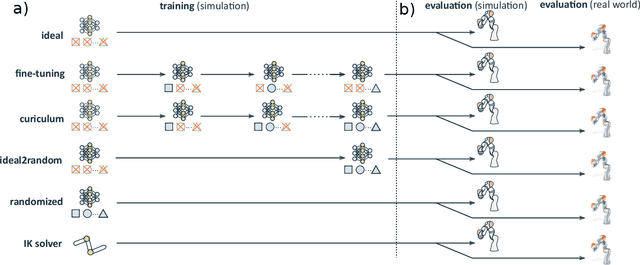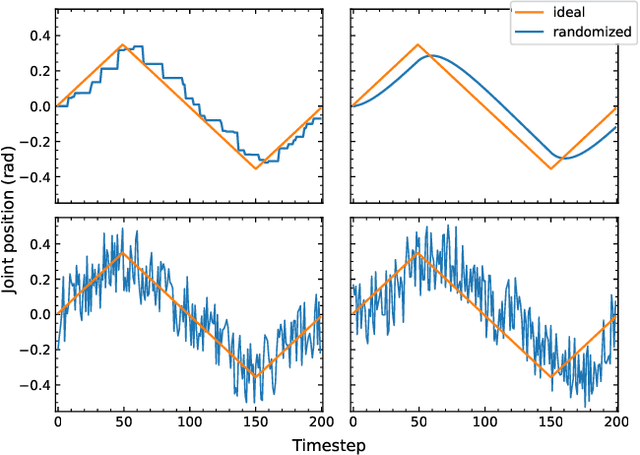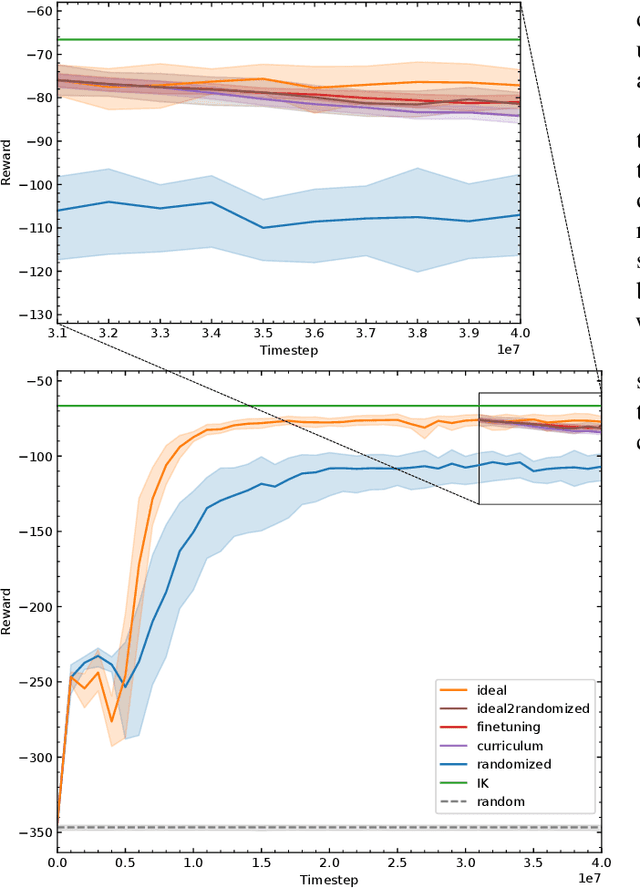Mohammadhossein Malmir
Department of Computer Engineering, School of Computation, Information and Technology, Technical University of Munich
Barlow-Swin: Toward a novel siamese-based segmentation architecture using Swin-Transformers
Sep 08, 2025Abstract:Medical image segmentation is a critical task in clinical workflows, particularly for the detection and delineation of pathological regions. While convolutional architectures like U-Net have become standard for such tasks, their limited receptive field restricts global context modeling. Recent efforts integrating transformers have addressed this, but often result in deep, computationally expensive models unsuitable for real-time use. In this work, we present a novel end-to-end lightweight architecture designed specifically for real-time binary medical image segmentation. Our model combines a Swin Transformer-like encoder with a U-Net-like decoder, connected via skip pathways to preserve spatial detail while capturing contextual information. Unlike existing designs such as Swin Transformer or U-Net, our architecture is significantly shallower and competitively efficient. To improve the encoder's ability to learn meaningful features without relying on large amounts of labeled data, we first train it using Barlow Twins, a self-supervised learning method that helps the model focus on important patterns by reducing unnecessary repetition in the learned features. After this pretraining, we fine-tune the entire model for our specific task. Experiments on benchmark binary segmentation tasks demonstrate that our model achieves competitive accuracy with substantially reduced parameter count and faster inference, positioning it as a practical alternative for deployment in real-time and resource-limited clinical environments. The code for our method is available at Github repository: https://github.com/mkianih/Barlow-Swin.
Safe Continual Domain Adaptation after Sim2Real Transfer of Reinforcement Learning Policies in Robotics
Mar 13, 2025Abstract:Domain randomization has emerged as a fundamental technique in reinforcement learning (RL) to facilitate the transfer of policies from simulation to real-world robotic applications. Many existing domain randomization approaches have been proposed to improve robustness and sim2real transfer. These approaches rely on wide randomization ranges to compensate for the unknown actual system parameters, leading to robust but inefficient real-world policies. In addition, the policies pretrained in the domain-randomized simulation are fixed after deployment due to the inherent instability of the optimization processes based on RL and the necessity of sampling exploitative but potentially unsafe actions on the real system. This limits the adaptability of the deployed policy to the inevitably changing system parameters or environment dynamics over time. We leverage safe RL and continual learning under domain-randomized simulation to address these limitations and enable safe deployment-time policy adaptation in real-world robot control. The experiments show that our method enables the policy to adapt and fit to the current domain distribution and environment dynamics of the real system while minimizing safety risks and avoiding issues like catastrophic forgetting of the general policy found in randomized simulation during the pretraining phase. Videos and supplementary material are available at https://safe-cda.github.io/.
DexGANGrasp: Dexterous Generative Adversarial Grasping Synthesis for Task-Oriented Manipulation
Jul 24, 2024Abstract:We introduce DexGanGrasp, a dexterous grasping synthesis method that generates and evaluates grasps with single view in real time. DexGanGrasp comprises a Conditional Generative Adversarial Networks (cGANs)-based DexGenerator to generate dexterous grasps and a discriminator-like DexEvalautor to assess the stability of these grasps. Extensive simulation and real-world expriments showcases the effectiveness of our proposed method, outperforming the baseline FFHNet with an 18.57% higher success rate in real-world evaluation. We further extend DexGanGrasp to DexAfford-Prompt, an open-vocabulary affordance grounding pipeline for dexterous grasping leveraging Multimodal Large Language Models (MLLMs) and Vision Language Models (VLMs), to achieve task-oriented grasping with successful real-world deployments.
Continual Domain Randomization
Mar 18, 2024Abstract:Domain Randomization (DR) is commonly used for sim2real transfer of reinforcement learning (RL) policies in robotics. Most DR approaches require a simulator with a fixed set of tunable parameters from the start of the training, from which the parameters are randomized simultaneously to train a robust model for use in the real world. However, the combined randomization of many parameters increases the task difficulty and might result in sub-optimal policies. To address this problem and to provide a more flexible training process, we propose Continual Domain Randomization (CDR) for RL that combines domain randomization with continual learning to enable sequential training in simulation on a subset of randomization parameters at a time. Starting from a model trained in a non-randomized simulation where the task is easier to solve, the model is trained on a sequence of randomizations, and continual learning is employed to remember the effects of previous randomizations. Our robotic reaching and grasping tasks experiments show that the model trained in this fashion learns effectively in simulation and performs robustly on the real robot while matching or outperforming baselines that employ combined randomization or sequential randomization without continual learning. Our code and videos are available at https://continual-dr.github.io/.
Representation Abstractions as Incentives for Reinforcement Learning Agents: A Robotic Grasping Case Study
Sep 22, 2023Abstract:Choosing an appropriate representation of the environment for the underlying decision-making process of the RL agent is not always straightforward. The state representation should be inclusive enough to allow the agent to informatively decide on its actions and compact enough to increase sample efficiency for policy training. Given this outlook, this work examines the effect of various state representations in incentivizing the agent to solve a specific robotic task: antipodal and planar object grasping. A continuum of state representation abstractions is defined, starting from a model-based approach with complete system knowledge, through hand-crafted numerical, to image-based representations with decreasing level of induced task-specific knowledge. We examine the effects of each representation in the ability of the agent to solve the task in simulation and the transferability of the learned policy to the real robot. The results show that RL agents using numerical states can perform on par with non-learning baselines. Furthermore, we find that agents using image-based representations from pre-trained environment embedding vectors perform better than end-to-end trained agents, and hypothesize that task-specific knowledge is necessary for achieving convergence and high success rates in robot control.
DiAReL: Reinforcement Learning with Disturbance Awareness for Robust Sim2Real Policy Transfer in Robot Control
Jun 15, 2023Abstract:Delayed Markov decision processes fulfill the Markov property by augmenting the state space of agents with a finite time window of recently committed actions. In reliance with these state augmentations, delay-resolved reinforcement learning algorithms train policies to learn optimal interactions with environments featured with observation or action delays. Although such methods can directly be trained on the real robots, due to sample inefficiency, limited resources or safety constraints, a common approach is to transfer models trained in simulation to the physical robot. However, robotic simulations rely on approximated models of the physical systems, which hinders the sim2real transfer. In this work, we consider various uncertainties in the modelling of the robot's dynamics as unknown intrinsic disturbances applied on the system input. We introduce a disturbance-augmented Markov decision process in delayed settings as a novel representation to incorporate disturbance estimation in training on-policy reinforcement learning algorithms. The proposed method is validated across several metrics on learning a robotic reaching task and compared with disturbance-unaware baselines. The results show that the disturbance-augmented models can achieve higher stabilization and robustness in the control response, which in turn improves the prospects of successful sim2real transfer.
Analysis of Randomization Effects on Sim2Real Transfer in Reinforcement Learning for Robotic Manipulation Tasks
Jun 13, 2022



Abstract:Randomization is currently a widely used approach in Sim2Real transfer for data-driven learning algorithms in robotics. Still, most Sim2Real studies report results for a specific randomization technique and often on a highly customized robotic system, making it difficult to evaluate different randomization approaches systematically. To address this problem, we define an easy-to-reproduce experimental setup for a robotic reach-and-balance manipulator task, which can serve as a benchmark for comparison. We compare four randomization strategies with three randomized parameters both in simulation and on a real robot. Our results show that more randomization helps in Sim2Real transfer, yet it can also harm the ability of the algorithm to find a good policy in simulation. Fully randomized simulations and fine-tuning show differentiated results and translate better to the real robot than the other approaches tested.
Non-Holonomic RRT & MPC: Path and Trajectory Planning for an Autonomous Cycle Rickshaw
Mar 10, 2021



Abstract:This paper presents a novel hierarchical motion planning approach based on Rapidly-Exploring Random Trees (RRT) for global planning and Model Predictive Control (MPC) for local planning. The approach targets a three-wheeled cycle rickshaw (trishaw) used for autonomous urban transportation in shared spaces. Due to the nature of the vehicle, the algorithms had to be adapted in order to adhere to non-holonomic kinematic constraints using the Kinematic Single-Track Model. The vehicle is designed to offer transportation for people and goods in shared environments such as roads, sidewalks, bicycle lanes but also open spaces that are often occupied by other traffic participants. Therefore, the algorithm presented in this paper needs to anticipate and avoid dynamic obstacles, such as pedestrians or bicycles, but also be fast enough in order to work in real-time so that it can adapt to changes in the environment. Our approach uses an RRT variant for global planning that has been modified for single-track kinematics and improved by exploiting dead-end nodes. This allows us to compute global paths in unstructured environments very fast. In a second step, our MPC-based local planner makes use of the global path to compute the vehicle's trajectory while incorporating dynamic obstacles such as pedestrians and other road users. Our approach has shown to work both in simulation as well as first real-life tests and can be easily extended for more sophisticated behaviors.
 Add to Chrome
Add to Chrome Add to Firefox
Add to Firefox Add to Edge
Add to Edge